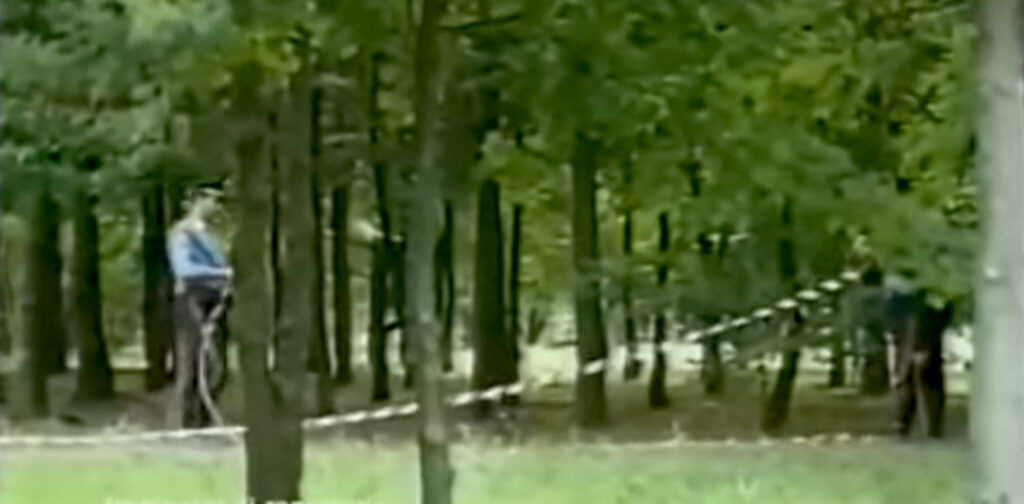Cops On The Verge Of Identifying Italian Jack The Ripper Who Murdered 14 Women Thanks To New DNA Evidence
Following a 44-year investigation, Italian police have used DNA samples to identify four suspects who match a ‘Jack the Ripper’-like serial killer who murdered 14 women over an 18-year period in the country.
The serial killer, dubbed the ‘Monster of Udine’, is believed to have killed 14 women between 21st September 1971 and 26th February 1989 in the province of Udine in north-eastern Italy.
Although the investigation lasted many years, the true identity of the killer has never been found.

However, during the production of a crime documentary series on the Monster of Udine, new evidence has brought forward four suspects.
The new findings were analysed by the Scientific Investigations Department and the results were forwarded to the public prosecutor of Trieste last month.
Detectives know that the same person is the confirmed murderer of four victims because of the way they were carried out, and that same person is the number one suspect for 10 others, but until now they did not know who that person was.
The first victim was identified as Irene Belletti, a 35-year-old prostitute from Trevi, who was found dead in her car near the Udine railway station on 19th September 1979.
Although the woman was stabbed seven times, the murder did not attract much attention because everyone thought the sex worker was murdered by a client.
The next victim was another prostitute, 19-year-old Maria Carla Bellone, who was found dead under a row of mulberry trees in the countryside on the outskirts of the town of Pradamano in 1980. It was suspected that she was killed during the night between 15th and 16th February.
One of the distinctive traits was that her neck was slashed from ear to ear. Another one, which would later become the symbol of the serial killer, was also detected on the young woman’s body. The murderer slashed the letter ‘S’ along the victim’s chest, from the sternum to the pubis, excluding the navel.
Another victim was found dead with the same characteristics as Maria Carla Bellone on 24th January 1983. The woman was identified as Luana Giamporcaro who also worked as a prostitute.

Another victim with the distinctive stomach wound was found on the evening of 3rd March 1985. The woman was identified as 42-year-old Aurelia Januschewitz.
That was when officers realised the murders were probably connected and carried out by the same person.
Carabinieri expert Edi Sanson, who discovered one of the victims, explained in the documentary why it was so hard to find the killer.
He said: “The story of the ‘Monster of Udine’ is very complex because we have few elements to be able to ascertain a serial murder dynamic for all the women involved in the case. The victims are 14, four of which have evident characteristics, probably attributable to the same person. In the other cases, however, it is a hypothesis that can be prosecuted but not taken for granted.”
The last suspected victim was Marina Lepre, an elementary school teacher living in Cividale del Friuli. She was unfamiliar with the world of prostitution but was going through a dark period in her life. She visited clubs, drank a lot, and used to hitchhike home, which is how she probably met the suspect.
Her lifeless body, dismembered with a longitudinal gash on the abdomen, was found on the banks of Torre River by police officer Edi Sanson and colleagues.
The police explained that the incision in the abdomen was very precise and that the person expertly knew how to use a scalpel, much like the unidentified serial killer ‘Jack the Ripper’, believed to have been a surgeon.
In the documentary series, Edi Sanson explained that the main suspect in the case was a middle-aged gynaecologist from the area who never practiced his medical profession.
Edi explained that he saw the elderly man in a car, parked in the same spot where the last victim was killed, the morning after the police found the body.
The police followed the man into an abandoned church where he reportedly started uttering strange incantations.
Although the police obtained a search warrant for the apartment the gynaecologist shared with his brother, no evidence was found except for a case of surgical instruments missing a scalpel.
The court closed the investigation on the gynaecologist due to lack of evidence.
Edi Sanson explained: “It was very difficult to even reconstruct the last hours of the victims’ lives. Among other things, in those years there were no CCTV cameras, no wiretapping or telephones. In the investigation, we did what could with the means of the time. What is certain is that, if such circumstances occurred now, we would have a good chance of finding the killer.”
Criminologist Rosa Francesca Capozza described the serial killer as “a misogynist, a man moved by a hatred of women. The number of stab wounds inflicted as well as the presence of ‘over killing’ them communicate the sadistic pleasure of inflicting suffering on them.

“He is a ‘local’ and stable killer who commits his crimes in a defined geographical area that he knows well because he resides there. He is also an ‘organised’ killer who plans his criminal actions.”
Regarding the famous abdominal wound, coroner Maurizio Saliva, who had access to the investigation files, explained that the ‘signature’ cut was inflicted on victims post-mortem.
The latest findings recovered during the production of the documentary series should help reveal the serial killer’s identity.
The findings include an unwrapped condom with whitish semi-liquid inside found in the car of one of the victims, some brown and blonde hairs on a sweater on the back shelf, and a cannabis joint recovered from another victim.
Although the analysis results of the latest findings have not been made public yet, there are reportedly four suspects, two men and two women, that the Scientific Investigations Department have identified.
The investigation is ongoing.



